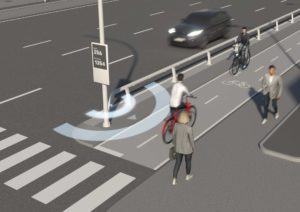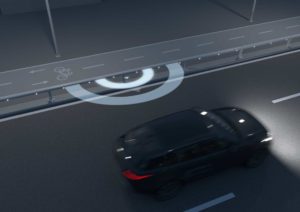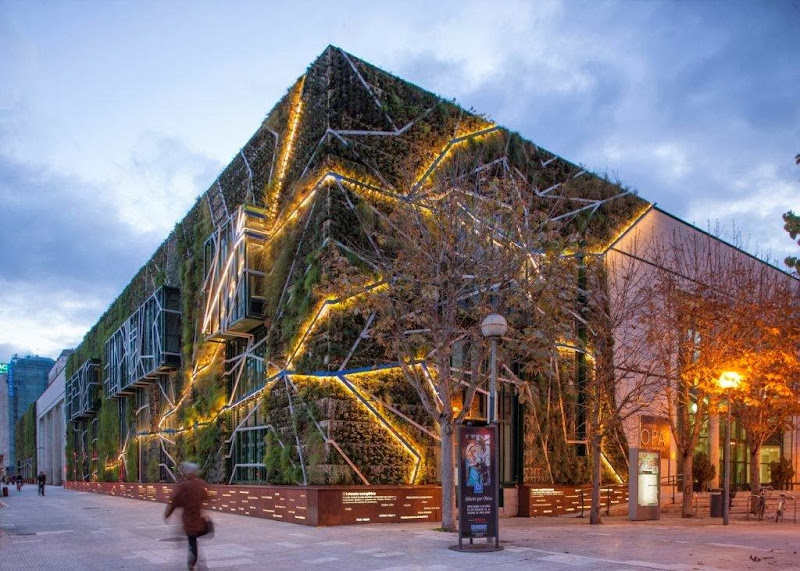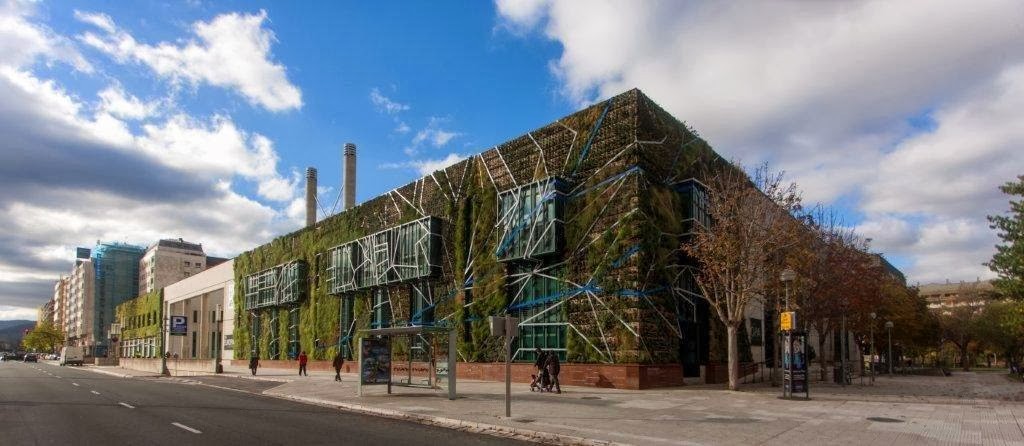Smart Cities, an ecosystem full of opportunities
At this point we will not spend much time defining a Smart City. If you want to dive into the concept of the Smart City, we invite you to review the article on what a Smart City is that we already shared on this topic.
To complement this information, today we will explore some real examples of Smart City, as well as trends that, over time, are proving to have bigger impact on services to citizenship.
Some examples of Smart City
The United Arab Emirates have created a city whose objective is not only sustainability, but also to be self-sufficient in natural resources. It is the City of Masdar, in Abu Dhabi. It hosts intelligent buildings that self-regulate the interior temperature, and systems to minimize the effects of the sun. Public transport is autonomous and the electricity grid is supplied 100% by solar panels.
New York is one of the most populous cities in the world, and one of the benchmarks in Smart City in the United States. In 2015, the so-called 'BigBelly' were introduced, rubbish bins equipped with wireless sensors to control their capacity, allowing the waste collection service to program routes more intelligently. This system includes a solar-powered trash compactor that helps increase the container's capacity by five.
In Amsterdam, 67% of journeys through the city center are made by bicycle. Although surprising, bike traffic jams happen usually at rush hour. In recent years, the city has deployed a network of sensors and a traffic management system for bicycle users, in such a way that, during those hours of greatest occupation, alternative routes can be defined and proposed to users to speed up travel .
The case of Barcelona
We can also find many examples of Smart City projects in Spain, for example, in Barcelona.
Urban transport systems have introduced hybrid buses, solar panels on bus shelters and the routes of the bus network have been optimized to be able to make 95% of trips with a maximum of one transfer between two destinations in any city . All this thanks to big data and the analysis of the influx of users and their routes.
Waste management has also incorporated digital technology in a similar way to New York. A container system with the capacity to generate a vacuum system allows the elimination of bad odours, at the same time, it incorporates available capacity sensors in real time that communicate to a centralized system that allows optimal routes to be optimized every day.
A smart street lighting system with low-energy bulbs and sensors that can measure humidity, temperature, air pollution, and the presence of people or noise is used throughout the city. In this way, the lighting intensity is adapted autonomously, reducing energy consumption. This is usually one of the first measures deployed in any Smart City as it offers direct savings on energy bills at a very reasonable cost and with technology that has already been widely tested in a real environment.

Trends for Smart Cities
Smart Cities are not a thing of the future, they are very much of the present. We refer to the previous examples on how a public service can be optimized with the application of technological projects. But not everything goes. Disruptive solutions can be invented and ingenious projects deployed, but in the medium term, which ones will actually have real success colonizing the majority of cities? What ideas or technologies or services will be the ones that will capture the attention and budgets of municipal administrations?
The first reflection is that this will depend on each city. Depending on your location, population, culture, idiosyncrasy or even the political profile of your rulers at a given time, you will define your priority challenges. Some will advocate for traffic management and sustainable mobility, others for water management and others for citizen security among many possible lines of work.
Identifying those motivations to submit the most suitable proposals will increase the probability that an opportunity will become a real project.
That said, if we statistically analyze the most common projects, we see common trends.
Technological infrastructure Data interoperability
A Smart City would not be such if it does not have sensors that collect a flow of data on which decisions can be made to improve or manage the resources available. This information already demonstrates a large volume and will be exponentially growing in the future. For this reason, it is necessary to work on sufficient storage capacity, on robust communication networks and on management software that is as centralized and open as possible to guarantee the correct processing of data in real time and interoperability between services and administrations. Without investing in these technological infrastructure capacities, it is almost impossible to advance in the deployment of the Smart City.
Cybersecurity
All data collected and stored is highly valuable information that must be protected to prevent cybercrime. Let us remember that many of them may refer to personal data or behavioral habits of citizens, who expect maximum privacy in exchange for providing them.
For this reason, cybersecurity is one of the critical aspects that administrations must work on. Citizens will only join the wave of the Smart City if they feel to a certain degree confidence that their data is protected, and that there is no fraudulent, partisan or economic use of it.
Smart traffic management
In large cities, traffic is usually a major problem that generates major headaches for managers and citizens. In addition, its consequences in terms of air pollution and noise are very negative.
The implementation of technology (cameras, sensors...) that allows obtaining real-time data on traffic in order to optimize routes is an obvious line of work. For this, the use of classic urban equipment as a platform in which to integrate digital technology should be considered. For example, intelligent containment systems can contain impacts when there are road exits, but also prevent accidents and provide statistical information in real time.
Public lighting service or waste management
Public lighting represents a very high expense for the city's bill. For many years now it has been confirmed that an investment in autonomously controlled LED technology for lighting regulation is a technically robust and profitable project in the medium term.
The digitization of the waste collection service has started later but, as we have explained, there are already numerous pilot projects in this line.
Useful projects for Smart Cities
Smart Cities cannot be the new excuse to place technological services without value. Each proposal must quantitatively demonstrate resource efficiency, sustainability, useful information, or a better experience for people. And ideally several of these benefits combined.
At Metalesa we have been working for many years to provide optimal solutions for Smart Cities, thinking of the ultimate benefit that citizens will obtain, for example, our Metaurban® SMART, the world's first smart urban parapet with active road safety, which not only contains, but also prevents and informs. An innovation that invites the private sector to transform urban equipment and take it to a new dimension by integrating it into the Smart City ecosystem.
Whether you are from a public administration and are looking for ideas, or a company interested in developing new products and looking for alliances, do not hesitate and contact us. We will be happy to help you and explore ways of collaboration.
United Nations World Road Safety Week
Like every year, the third week of May marks the United Nations World Road Safety Week, an event that wants to put in the spotlight the various dangers that exist on the roads to create awareness, thus serving as a loudspeaker for developing regulations that help reduce incidents and save lives.
Last year, a campaign was launched under the slogan #StreetsForLife #Love30. The goal was to create residential urban areas with a speed limit of 30km/h, thus contributing to make cities safer, more ecological and suitable for different mobility models, vehicles, scooters, bicycles and VMPs.

This was the first of many campaigns that have been planned as part of the Decade of Action for Road Safety 2021-2030. This action plan is part of the 2030 Agenda for Sustainable Development, a worldwide voluntary action plan agreed upon by the Member States of the United Nations to protect the planet and all of us who inhabit it, and which seeks, among many other sustainability objectives, to be able to prevent at least 50% of traffic accidents by 2030.
This is more urgent than ever because recent studies speak out about worrying trends. According to Fundación Linea Directa, "the urban accident rate among vulnerable users could worsen, causing up to 5,500 deaths in Spanish cities by 2030, which represents an annual increase of between 30 and 50%". Among the main arguments that the study exposes are the massive deployment of bike lanes in urban environments, the popularity of VMPs, or the lack of social awareness of sustainable mobility.

The new models of urban mobility, a new need
Within the objectives of the 2030 Agenda, special emphasis is placed on the concept of Sustainable Cities: large human settlements in which resource consumption is sustainable without harming air quality. This is why in recent years awareness campaigns have been designed towards more sustainable mobility inside and outside urban areas with the creation of Low Emission Zones and the expansion of pedestrian and bicycle lanes.
With all this, new means of personal mobility have emerged and regulations have become obsolete or have had to be adapted, thus giving rise to new needs in road safety systems.
First approved parapet with active safety
Metalesa's mission is to protect people, it is to save lives. Uniting this purpose with this context of new mobility in urban environments, the idea arose of creating the new Metaurban® SMART, the first parapet with active road safety, that is, it not only passively waits to contain an accident, but also prevents these happen through intelligent signage.
The development of this new product responds to society's growing need to have approved products as a guarantee of quality for urban and peri-urban areas, while taking advantage of new technologies and the deployment of 5G communications to bring containment to a new dimension as smart products.


It is a system fully aligned with the new trends in infrastructure management: security, sustainability and connectivity.
- It guarantees safety because it has been tested on a real scale as certified by the CE marking.
- It promotes sustainable mobility by making the new infrastructures in cities safer and friendlier.
- It is connectable because it integrates PLUG&META® technology, which not only waits for the accident to happen, but also identifies risk situations, and acts by alerting road users through signalling, minimizing the probability that these accidents will happen. Up to 10 functional scenarios have been developed, for example, accident warning, pedestrian presence, excessive speed, traffic jams, or bad visibility warning, among others.
It is a totally innovative parapet because, as can be seen, in addition to containing it in the event of an accident, it prevents these from happening, and also collects data and informs the municipal authority of all those events that are desired, from quality data of air, counting or multiple statistics of events detected by the sensors incorporated in the parapet.
The system is modular, in such a way that SMART technology can be incorporated only in that section where there really is a special need, and the rest can be a traditional containment system that is 100% safe before leaving the track.
And all of this can be managed remotely thanks to the management platform accessible from any device.
In this way, a traditional containment system has evolved into a new traffic management and urban mobility and information service for the city.
The Metaurban® SMART parapet represents a breakthrough in the urban equipment sector, prompting the imagination of how the IoT can transform static elements into active digital members of the smart city ecosystem.
Our goal is to improve people's quality of life, focusing our efforts on offering a range of technologically advanced security and protection solutions. If you want to know a little more about this technology, visit our new microsite.
Green facades against noise in large cities
Green facades against noise in large cities are an effective and sustainable alternative to the current lifestyle. Historically, nature has been introduced into urban environments through parks and green areas in delimited spaces. Over time this trend has been evolving, and more and more, the proposal aims at integrating nature and environmental awareness in our daily lives to develop a society that is as sustainable as possible.
What are green cities?
These cities are those that respect the environment to a greater extent and facilitate the coexistence of people with nature in their daily lives. Green cities seek to take advantage of natural resources, thus favoring friendly urban environments in such important aspects as green spaces, air quality, coexistence with animals or temperature regulation.
Large cities find it very difficult to adapt to this objective, which is why their authorities often seek disruptive solutions that attract sustainability without destroying everything that has already been built. One of the most effective solutions are vertical gardens. Flowers, aromatic plants and even urban gardens planted on walls that help clean the air and bring numerous benefits to people. Plants absorb CO2 from the air while producing oxygen, they have pleasant smells, they also regulate temperature and act as a layer against noise.
In cities like Singapore, always at the forefront of sustainability, or much closer, Vitoria-Gasteiz, named European Green Capital in 2012, we can find examples of this concept.

Our commitment to sustainability
At Metalesa we are committed to the environment and sustainability by providing innovative solutions, such as our screens against noise pollution. These screens are barriers specially designed to deal with the problem of noise pollution for both people and animals.
Today in particular, we focus on a solution for noise pollution that is also sustainable and provides great support for introducing vegetation into urban spaces.
Our Metagreen acoustic screens integrate nature into urban spaces in the style of vertical gardens. This product is in tune with the concepts of green cities and smart cities, since it provides the technology of acoustic screens against noise plus the benefits for the health of people and the environment with its natural cover of living vegetation.
Metagreen acoustic screens
The Metagreen sound-absorbing panel is made up of a hot-dip galvanized steel frame that fits between the fastening profiles of the support structure. Its interior is made up of rock wool and other materials that, together with the green plastic mesh, facilitate the growth of vegetation on both sides. In addition, they are sustainable, since the rock wool inside them is capable of retaining rainwater, which becomes a moisture reserve for the vegetation that grows outside.
Advantages of the Metagreen acoustic screen
Being a plant panel, it integrates magnificently with the landscape and blends in with the new model of green cities with vertical gardens. Among its most notable advantages it is important to highlight the natural properties of vertical gardens, such as the release of oxygen, as well as the absorption of CO2, temperature regulation and livening up of urban spaces, visually approaching natural spaces.
It also has numerous advantages such as its durability thanks to the galvanized anti-corrosion treatment, its excellent insulating and absorbing properties against noise pollution.
METAGREEN panel
Plant-like sound-absorbing panels
Where to install plant-based anti-noise screens?
One of the most common spaces where these screens are added is on roads, since their maintenance is minimal and simple. It is also very common to see them in urban, public and private areas, such as chalets or urbanizations due to their attractive plant aesthetics and their fantastic anti-noise properties. They perform a dual aesthetic and acoustic function.
How are Metagreen acoustic screens installed?
These screens are very easy to install, but it is convenient that any project is studied by our team of engineers to guarantee the expected acoustic result and the robustness of the solution.
Green cities are a great alternative to urban spaces far from nature. If you want more information about our Metagreen screens, or want to know our complete range of acoustic screens, contact us. We will be happy to help you.


